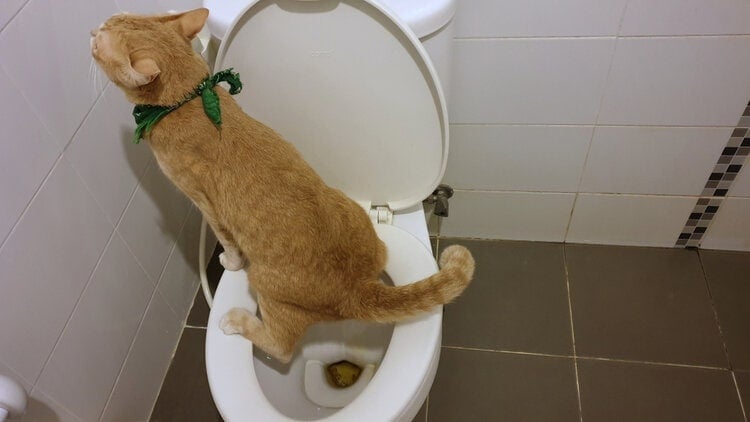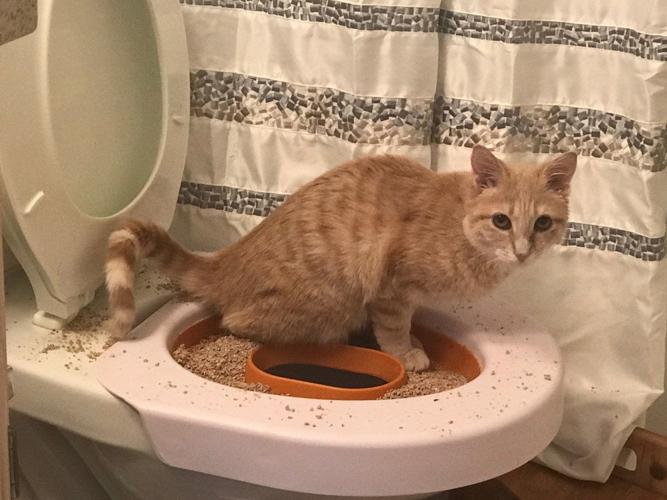Important Reasons Why Animal Waste Has to Never Be Flushed Down the Toilet
Important Reasons Why Animal Waste Has to Never Be Flushed Down the Toilet
Blog Article
In this article underneath you will discover some good answers related to Should you flush animal waste down the toilet.

When it involves dealing with waste, specifically animal waste, many individuals typically resort to the hassle-free option of flushing it down the commode. Nevertheless, this apparently simple remedy can have significant repercussions for the setting and public health. In this article, we'll discover why flushing pet waste down the toilet is a poor idea and give alternate methods for correct disposal.
Intro
Proper waste disposal is crucial for preserving ecological sustainability and public health. While it might seem harmless to flush animal waste down the commode, it can result in different concerns, both for the environment and human health.
Risks of flushing pet waste
Ecological impact
Flushing animal waste introduces damaging bacteria and pathogens into waterways, which can negatively impact water ecological communities. These microorganisms can contaminate water resources and damage aquatic life, disrupting delicate ecological communities.
Public health concerns
Animal waste has harmful bacteria such as E. coli and Salmonella, which can pose major health and wellness dangers to human beings. Purging animal waste down the toilet can pollute water supplies, leading to the spread of diseases and infections.
Alternatives to flushing
Instead of purging pet waste down the toilet, there are numerous different disposal methods that are a lot more eco-friendly and sanitary.
Composting
Composting animal waste is an eco-friendly way to deal with it. By composting, organic matter is broken down into nutrient-rich dirt, which can be made use of to feed gardens and plants.
Landfill disposal
Getting rid of pet waste in a land fill is another alternative. While not as environmentally friendly as composting, it is a more secure choice to flushing, as it protects against the contamination of water sources.
Animal garbage disposal systems
There are specific pet dog garbage disposal systems offered that securely and hygienically dispose of animal waste. These systems usually use enzymes to break down waste and eliminate odors.
Actions to proper animal garbage disposal
To ensure proper disposal of animal waste, follow these steps:
Scooping and bagging waste
Frequently scoop and bag animal waste utilizing naturally degradable bags. This stops waste from infecting the atmosphere.
Utilizing assigned waste containers
Dispose of bagged animal waste in designated waste containers, such as compost containers or landfill containers. Avoid flushing it down the toilet in any way prices.
Cleaning litter boxes and animal locations routinely
Regularly clean can and animal locations to avoid the build-up of waste and microorganisms. Usage pet-safe cleaning products to maintain hygiene.
Benefits of proper disposal techniques
Embracing correct disposal approaches for animal waste uses numerous benefits:
Minimized environmental pollution
Correct disposal approaches minimize the danger of environmental pollution, protecting waterways and ecosystems from contamination
Reduced danger of water contamination.
By avoiding flushing pet waste down the bathroom, the threat of water contamination is significantly decreased, safeguarding public health.
Improved hygiene and hygiene
Appropriate disposal methods promote better sanitation and health, developing a more secure environment for both people and animals.
Final thought
Finally, flushing animal waste down the commode is unsafe to the setting and public health. By embracing alternate disposal approaches and following appropriate waste management practices, we can lessen the adverse impact of pet waste and contribute to a cleaner, healthier world.
What To Do With Dog Poo – The Do's And Don'ts Of Disposing Of Faeces
Dog poo bins
Some councils provide dedicated dog waste bins in popular dog-walking areas that can take dog poo that has been bagged but you can legally dispose of dog waste in any public litter bin, as long as it is securely bagged. This also applies to your wheelie bin at home.
Do not flush
Water companies do not recommend flushing dog faeces down the toilet because certain parasites can survive the water processing treatment and are potentially harmful to humans. You should also never consider flushing dog poo that has been bagged down the toilet as the bags will not break down and instead create severe blockages in the sewage system.
In the woods
The Forestry Commission promotes a ‘stick and flick’ method for dealing with waste in the woods. This means finding a stick and using it to flick any poo from off the path so that it is out of the way of other walkers. You could also bury it as long as it is not in an area where there might be livestock.
Livestock
Parasites found in dog poo can be transmitted to livestock if they inadvertently eat infected faeces that has been left on grazing land. This could result in the death of sheep or abortion in cattle so you should always make sure you pick up your dog’s waste in fields where livestock could be present.

Regularly clean can and animal locations to avoid the build-up of waste and microorganisms. Usage pet-safe cleaning products to maintain hygiene.
Benefits of proper disposal techniques
Embracing correct disposal approaches for animal waste uses numerous benefits:
Minimized environmental pollution
Correct disposal approaches minimize the danger of environmental pollution, protecting waterways and ecosystems from contamination
Reduced danger of water contamination.
By avoiding flushing pet waste down the bathroom, the threat of water contamination is significantly decreased, safeguarding public health.
Improved hygiene and hygiene
Appropriate disposal methods promote better sanitation and health, developing a more secure environment for both people and animals.
Final thought
Finally, flushing animal waste down the commode is unsafe to the setting and public health. By embracing alternate disposal approaches and following appropriate waste management practices, we can lessen the adverse impact of pet waste and contribute to a cleaner, healthier world.
What To Do With Dog Poo – The Do's And Don'ts Of Disposing Of Faeces
Dog poo bins
Some councils provide dedicated dog waste bins in popular dog-walking areas that can take dog poo that has been bagged but you can legally dispose of dog waste in any public litter bin, as long as it is securely bagged. This also applies to your wheelie bin at home.
Do not flush
Water companies do not recommend flushing dog faeces down the toilet because certain parasites can survive the water processing treatment and are potentially harmful to humans. You should also never consider flushing dog poo that has been bagged down the toilet as the bags will not break down and instead create severe blockages in the sewage system.
In the woods
The Forestry Commission promotes a ‘stick and flick’ method for dealing with waste in the woods. This means finding a stick and using it to flick any poo from off the path so that it is out of the way of other walkers. You could also bury it as long as it is not in an area where there might be livestock.
Livestock
Parasites found in dog poo can be transmitted to livestock if they inadvertently eat infected faeces that has been left on grazing land. This could result in the death of sheep or abortion in cattle so you should always make sure you pick up your dog’s waste in fields where livestock could be present.

As a keen person who reads about Why you should never flush dog poop down the toilet, I assumed sharing that segment was a good idea. Enjoyed reading our write-up? Please share it. Let somebody else discover it. Thanks a lot for going through it.
Call Today Report this page